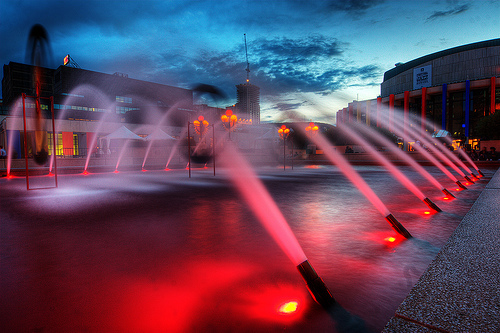
Maximation, Expectation. (2008). Water Works. Retrieved from https://www.flickr.com/photos/expectationmaximization/2744096808/.
When doing motion blur photography with long shutter speeds, it’s essential to avoid overexposing your images due to too much light. Some techniques to help control and reduce the amount of light hitting your camera sensor are:
- Smaller Aperture (Higher f-stop):
Decrease the size of your camera’s aperture (use a higher f-stop number like f/16 or f/22). A smaller aperture lets in less light, which can help compensate for the extended shutter speed. - Lower ISO Setting:
Use a lower ISO setting (e.g., ISO 100 or 200) to reduce the sensitivity of your camera sensor to light. Lower ISO values result in less noise and a more controlled exposure. - Shoot During Low-Light Conditions:
Choose to shoot during dawn, dusk, or in overcast conditions when there’s less natural light available. This can naturally reduce the amount of light hitting your sensor. - Reduce Ambient Light:
Block out any additional light sources by using a lens hood, your hand, or a piece of black fabric around the lens to prevent unwanted light from entering the camera. - Post-Processing:
In some cases, you can adjust exposure and brightness during post-processing to correct for overexposed images.
